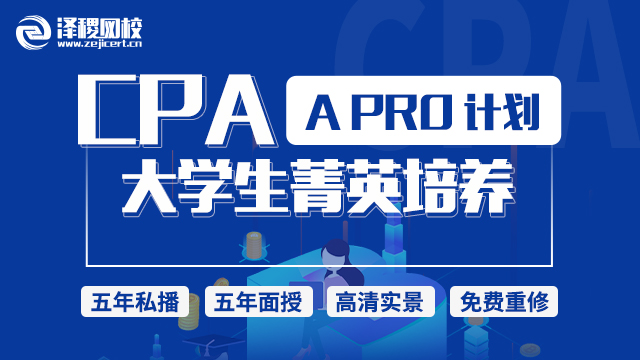P2简单介绍
P2,公司报告。P2是F7的升级版也是终极版。Section A就是编报表,35分,然后是一个和报表相关的准则题(7-8分)和一个道德的题目(7-8分),报表嘛就资产负债表、损益和全面收益变动表、外汇报表和现金流量表四张,没有shortcuts,我当时就是把练习册上所有报表题一刷再刷,时间不够的考友也至少刷两次,第一遍就自己做,第二遍就把自己第一次错的点重点关注一下。这份付出绝对是值得的(虽然我很想吐槽外汇报表我掌握得最差居然考这货……),然后道德的题目分也很好拿,因为相对算是固定的了,看历年真题整理下就ok。简单介绍
Section B里面一道准则、一道特殊行业还有一道准则的Current developments,其实蛮幸运的,一般大家都只能被迫选2、3两题,而这次第4题居然押准了IFRS15,所以就顺顺利利答下来了,一般情况还是不建议选4的,那么另外两道归根结底就是你对所有准则的掌握了,同样的,拿本本子,最好活页,将所有的准则号记录下来。然后去做BPP练习册的题目,遇到哪个准则,就把他是怎么答的往自己宝典上搬,最后按照准则顺序整理一下考前翻看就很棒了!
很实在的说一句,P2的学习就是从抄开始的,但千万注意是有脑子地抄,有意识地去记和背,时间久了你就会发现自己也就真的能写出像模像样地长篇大论了,P2的计算已经不再像F7那么重要了,重要的是你对准则的理解程度,你要会写。对于一些P2很爱考的或者不同于F7的准则比如IAS 38,IAS36,IAS37,IAS16,IFRS2,IFRS11等要加倍关注,多看,多背!加一句,多总结!
A考考官建议
ACCA考官觉得在最近的考试中,考生们相比理解,更注重背诵和记忆。但是他希望考生要去理解这个法则、在答题的时候要联系所给材料,而不是仅仅机械的背诵。他认为一个优秀的考生是思维严谨并可以把理论应用于实践的。
考官说他对考生的要求还是很严格的,并且表示“对学生手稿的水准表示十分失望!”
考官还透露说他决定不会去测试或查考学生是否了解细微的考纲变化,因为这种考察没有意义。所以他不会去考察IFRS细微的变化的,他只希望考生去了解法则的重点。
考生们对考试问题中的一些词汇似乎不是那么理解。考官问的是“建议”和“评价”,但是他看到的答案却是罗列了一排单词,并不是建议和评价。
考官强调概念框架对于所有的问题都是相关的。但是考生的答案有些时候对于IFRS的实际应用来说有点太浅显了。另外,考官还担心的一点就是,现在的学生似乎都喜欢有战略的学习,而不是有深度的学习,学生的选题和学习都是基于过去的真题。
考官还给大家提了一个很实用的建议,就是一定要分步骤答题,尤其是一下复杂的计算题。
EXAM TIPS
强调:
我们发布本ACCA exam tips不是用来给你押题的,是汇总本次P2考试的重要关键信息。文中有部分知识点的整理,更重要的是考试答题技巧的汇总,以及考前准备。押题复习不可取,大家借助本文参考资深考官给出的考试答题技巧更加重要。
ACCA P2 Exam Tips September 2017 Session are given below by famous tuition providers
Kaplan
Do not ignore ethics it appears in every section A question and could have up 10 marks.
Always apply your 5 standard workings when doing CSFP.This will help ensure easy marks are picked up and it is easier for the marker to follow what you have done.
Do not ignore the current issue question.Often it contains numerical aspects of an accounting standard you are familiar with as well as the current issue.E.g.reviewing the use of FV and the new rules on financial assets in IFRS 9.
Practise as many questions as possible across the syllabus,and don’t only concentrate on consolidation.Practice writing out pro-formas so you can do this quickly and efficiently on exam day.
Use the reading time effectively–decide which question you are not going to attempt from Section B and then read the Section A question.
If you need help with Accounting Standards,read Clare Finch’s guide to IFRS.
If you struggle with Groups,read Tom Clendon’s guide to Group accounts
Consolidation is hugely important but you can’t pass the exam on this alone–a significant number of marks in the consolidation tests your understanding of other accounting standards.
Don’t overrun your time on part A of question 1.There are often easier marks available in pasts B&C.
If you can’t do something ignore it and move on–time is very tight and there is no point staring at a blank piece of paper if you really don’t know what to do.
In addition to consolidation the examiner is particularly keen on:
Revenue Recognition
Financial Instruments
Pensions
Deferred Tax
Reconstruction of insolvent company
Foreign Currency
Impairment
The examiner writes articles that are published on accaglobal.com–search for“Graham Holt”。
An understanding of the Accounting framework is vital in being able to discuss any issues surrounding an accounting standard or proposed change to that standard.
Unlike F7,there are very few marks,if any,for simple figures in the Consolidation exercise.Marks are concentrated on the adjustments and detailed computations of key group issues,like Goodwill,NCI etc.Make sure your workings are clear and fully explain any adjustments you make to comply with relevant IFRS.
Do not treat the Consolidation exercise as being all 50 marks of question 1.It will typically be 35 so allocate the correct time to it and the other elements in Q1.
In scenario style questions in section B,be sure to state the relevant accounting standard for any advice that you give,together with the relevant rules from the standard and then subsequently state the advice on correct treatment of facts in the scenario.Don’t be tempted to jump straight to a statement of the correct treatment as marks will not be maximised by doing this.Read articles and read around the subject.
Remember
Do not add up the accounts.
Start each question on a fresh page.
BE NEAT in the exam.
Time management(or lack of it!)is the most common reason for failure.
BPP
Section A is the 50-mark compulsory case study and will include a preparation statement of financial position and/or a group statement of profit of loss and other comprehensive income or statement of cash flows which may include foreign subsidiary,discounted activities,disposals and/or acquisitions.This will include other accounting complications such as financial instruments,pensions,share-based payment and impairment.
There will also be discursive requirements on a linked accounting adjustment and social/ethical/moral aspects of corporate reporting.
Section B
Q2&Q3:One multi-part question covering a range of topics or a theme such as fair value measurement(see exam team article),deferred tax,foreign currency transactions,financial instruments,pensions,share-based payment,non-current assets(recognition and/or impairment of tangible and intangible assets),borrowing costs,the effect of accounting treatments on earnings per share or ratios.
The other,an industry-based question testing a range of standards such as accounting policies and the framework,leases,grants,IFRS for SMEs,reorganisations,provisions,events after the reporting period and related parties.
Q4:A discussion question looking at current developments in corporate reporting and problems with existing standards,such as capital reporting(see 2 exam team articles),leasing,revision of the conceptual framework,classification in profit or loss vs OCI(see exam team article),improvements to disclosure,regulatory issues over adoption and consistent application of IFRSs,implementation issues,application of the definition of control and significant influence(equity accounting),improvement in performance measurement,integrated reporting(see exam team article),revenue recognition(see exam team articles)。It will also normally include a related computational part based on figures from a case study.
One of these questions can also include elements of group accounting,especially if Q1 is a statement of cash flow question.
General advice:Don’t spend too much time on numerical parts at the expense of the written bits!It is often easier to pick up marks in written questions than in complex numerical ones.Work on the basis of 1 mark per well-explained point for written questions.
LSBF
Q1 is a balance sheet or cash flow or p/l in roughly that order of probability but roughly equal probability.
Q2&Q3 will be the usual mix of the usual suspects including fi and dt and nca and sbp and revenue and provisions and so on.
Q4 sees leases as red hot.Meaning it will probably be something else like provisions or goodwill or general corporate reporting.
点击在线咨询泽稷老师,ACCA中文宝典免费领,更有机会获得海量免费ACCA学习资料。





 白金级认可培训资质(总部)
白金级认可培训资质(总部)
 课程试听
课程试听
 职业规划
职业规划
 ACCA中文教材
ACCA中文教材
 考位预约
考位预约
 免费资料
免费资料




 题库下载
题库下载
 模拟机考
模拟机考




 CFA®成绩查询
CFA®成绩查询




 GARP协会官方认可FRM®备考机构
GARP协会官方认可FRM®备考机构





















